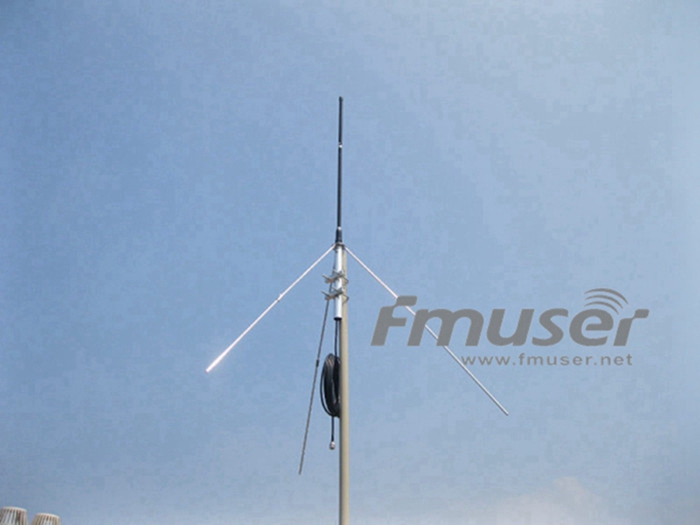Products Category
- FM Transmitter
- 0-50w 50w-1000w 2kw-10kw 10kw+
- TV Transmitter
- 0-50w 50-1kw 2kw-10kw
- FM Antenna
- TV Antenna
- Antenna Accessory
- Cable Connector Power Splitter Dummy Load
- RF Transistor
- Power Supply
- Audio Equipments
- DTV Front End Equipment
- Link System
- STL system Microwave Link system
- FM Radio
- Power Meter
- Other Products
- Special for Coronavirus
Products Tags
Fmuser Sites
- es.fmuser.net
- it.fmuser.net
- fr.fmuser.net
- de.fmuser.net
- af.fmuser.net ->Afrikaans
- sq.fmuser.net ->Albanian
- ar.fmuser.net ->Arabic
- hy.fmuser.net ->Armenian
- az.fmuser.net ->Azerbaijani
- eu.fmuser.net ->Basque
- be.fmuser.net ->Belarusian
- bg.fmuser.net ->Bulgarian
- ca.fmuser.net ->Catalan
- zh-CN.fmuser.net ->Chinese (Simplified)
- zh-TW.fmuser.net ->Chinese (Traditional)
- hr.fmuser.net ->Croatian
- cs.fmuser.net ->Czech
- da.fmuser.net ->Danish
- nl.fmuser.net ->Dutch
- et.fmuser.net ->Estonian
- tl.fmuser.net ->Filipino
- fi.fmuser.net ->Finnish
- fr.fmuser.net ->French
- gl.fmuser.net ->Galician
- ka.fmuser.net ->Georgian
- de.fmuser.net ->German
- el.fmuser.net ->Greek
- ht.fmuser.net ->Haitian Creole
- iw.fmuser.net ->Hebrew
- hi.fmuser.net ->Hindi
- hu.fmuser.net ->Hungarian
- is.fmuser.net ->Icelandic
- id.fmuser.net ->Indonesian
- ga.fmuser.net ->Irish
- it.fmuser.net ->Italian
- ja.fmuser.net ->Japanese
- ko.fmuser.net ->Korean
- lv.fmuser.net ->Latvian
- lt.fmuser.net ->Lithuanian
- mk.fmuser.net ->Macedonian
- ms.fmuser.net ->Malay
- mt.fmuser.net ->Maltese
- no.fmuser.net ->Norwegian
- fa.fmuser.net ->Persian
- pl.fmuser.net ->Polish
- pt.fmuser.net ->Portuguese
- ro.fmuser.net ->Romanian
- ru.fmuser.net ->Russian
- sr.fmuser.net ->Serbian
- sk.fmuser.net ->Slovak
- sl.fmuser.net ->Slovenian
- es.fmuser.net ->Spanish
- sw.fmuser.net ->Swahili
- sv.fmuser.net ->Swedish
- th.fmuser.net ->Thai
- tr.fmuser.net ->Turkish
- uk.fmuser.net ->Ukrainian
- ur.fmuser.net ->Urdu
- vi.fmuser.net ->Vietnamese
- cy.fmuser.net ->Welsh
- yi.fmuser.net ->Yiddish
What are the Important Characteristics of the Antenna?
Three features of antennas are particularly important, namely their directionality, gain, and bandwidth.

Directionality
Dipoles are very directional: they pick up incoming radio waves traveling at right angles to them. That's why a TV antenna has to be properly mounted on your home, and facing the correct way, if you're going to get a clear picture. The telescopic antenna on an FM radio is less obviously directional, especially if the signal is strong: if you have it pointed straight upward, it will capture good signals from virtually any direction. The ferrite AM antenna inside a radio is much more directional. Listening to AM, you'll find you need to swivel your radio around until it picks up a really strong signal. (Once you've found the best signal, try turning your radio through exactly 90 degrees and notice how the signal often falls off almost to nothing.)
Although highly directional antennas may seem like a pain, when they're properly aligned, they help to reduce interference from unwanted stations or signals close to the one you're trying to detect. But directionality isn't always a good thing. Think about your cellphone. You want it to be able to receive calls wherever it is in relation to the nearest phone mast, or pick up messages whichever way it happens to be pointing when it's lying in your bag, so a highly directional antenna isn't much good. Similarly for a GPS receiver that tells you where you are using signals from multiple space satellites. Since the signals come from different satellites, in different places in the sky, it follows that they come from different directions, so, again, a highly directional antenna wouldn't be that helpful.
Gain
The gain of an antenna is a very technical measurement but, broadly speaking, boils down to the amount by which it boosts the signal. TVs will often pick up a poor, ghostly signal even without an antenna plugged in. That's because the metal case and other components act as a basic antenna, not focused in any particular direction, and pick up some kind of signal by default. Add a proper directional antenna and you'll gain a much better signal. Gain is measured in decibels (dB), and (as a broad rule of thumb) the bigger the gain the better your reception. In the case of TVs, you get much more gain from a complex outdoor antenna (one with, say, 10–12 dipoles in a parallel "array") than from a simple dipole. All outdoor antennas work better than indoor ones, and window and set-mounted antennas have higher gain and work better than built-in ones.
Bandwidth
An antenna's bandwidth is the range of frequencies (or wavelengths, if you prefer) over which it works effectively. The broader the bandwidth, the greater the range of different radio waves you can pick up. That's helpful for something like television, where you might need to pick up many different channels, but much less useful for telephone, cellphone, or satellite communications where all you're interested in is a very specific radio wave transmission on a fairly narrow frequency band.
Here are some antennas for your reference:
DP100 1/2 Half Wave FM Dipole Antenna
Circular Elliptical Polarized CP100 Antenna
FU-DV1 1 bay FM Dipole Antenna
UHF 430-440MHz 14dBi Yagi Antenna
FU-DV2 High Gain FM Dipole Antenna

